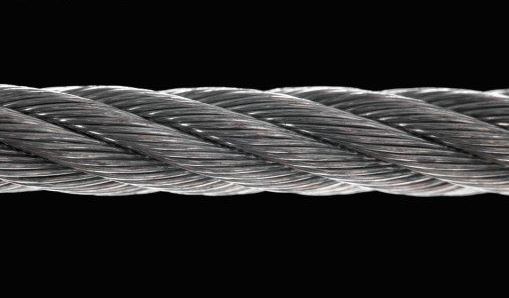Regular and lang lay are two properties of wire rope that are overlooked. While construction, size, material, etc. are all important considerations when it comes to purchasing wire rope, it is equally important to understand lay. The lay direction of a cable highly impacts its functionality because it determines how much a cable will rotate, twist, and kink. In today’s blog we will provide a definition of each of these lay terms and then also explain the functionality of both. Understanding how these factors drive your cable performance is crucial to ensuring you buy thew suitable cable for your application.

It is first important to understand what lay direction means. Lay direction refers to the relationship between the way wires are wrapped into strands, and the way those strands are wrapped into wire ropes and cables. Typically, two different configurations of lay directions are talked about in cable and wire rope: regular lay, and lang lay. It is important to note that both lays can turn to the left or right.
Regular Lay Cable:
Regular lay cable refers to when the wires and strands are laid opposite to each other. The wires are laid in one direction as they are made into strands and then those strands are laid in the opposite direction of wires to combine into cable. Regular lay cable will have wires that appear to run parallel and straight the entire way. In terms of right regular vs left regular lay, it is based on the way the strands flow. Right regular lay means the strands will all flow to the right or clockwise direction. Regular left lay cable all flows to the left in a counterclockwise direction.

Lang Lay Cable:
Lang lay configurations are when the wires and strands are laid in the same direction. If all the wires are laid to the right as they are made into strands, then those strands will also be laid to the right as they are combined into cable. The same applies to a left lang lay configuration, where both the wires and strands would lay to the left. If you look along a length of lang lay cable, the wires will seem to angle across the rope, following the general flow of the strands. Same as with regular lay, the right lang lay means the strands will flow rightward in a clockwise direction and left for left lang lay. However, lang lay means that the wires will also flow the same way as the strands.
Use & Functionality:
Regular lay is the standard method for cable manufacturing because it is useful for a variety of different applications. Regular lay also is compatible with most equipment. Regular lay is also typically more resistant to crushing forces but not as flexible as lang lay. As lang lay cables are usually more susceptible to pinching and kinking, they are better suited to hoisting applications where the cable only moves along one axis.
Now that you have an understanding between regular lay and lang lay, it is important to find a place to buy your cable and wire ropes that deliver on high performance. Here at Strand Core, we domestically manufacture strand, cable, and wire rope with state-of-the-art equipment to deliver the highest performance you require. Find out more by checking out our products page. Alternatively, if you have any questions or team is happy to help! Reach out to us by email at sales@strandcore.com or by phone at 800-983-9926.

